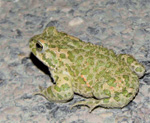SO1
In terms of environmental sustainability, Snam considers it particularly important to safeguard the natural value of local areas affected by new works, beginning with specialised field investigations to acquire knowledge that is as complete as possible of the local area traversed. The results of these investigations help define and implement the most appropriate design choices for reducing to a minimum the biodiversity impacts generated particularly in the execution phases, which are followed by environmental restoration and monitoring thereof, carried out in agreement and in cooperation with the entities in charge.
EN13
The objective of vegetation restoration, in particular reforestation, is not merely to reconstitute forest areas, but to reconstitute the landscape in general and to revive the biological functionality of vegetated areas, understood especially in their role as habitats for fauna with specific biodiversity characteristics. Restoration and reforestation are followed by the execution of “plant care”, i.e. care and maintenance, for a period of at least five years, of the plants planted.
EN14
Monitoring projects concern the courses of some methane pipelines that interfere, albeit marginally, with natural local areas high in fauna and ecological value, and they are geared toward verification of the process of renaturalising areas affected by works, based on a comparison of conditions after restoration (“post-completion”) and the original condition (“pre-completion”). Monitoring is normally performed for the most significant habitats identified in the design phase.
EN11
| Download XLS (18 kB) |
|
Distance covered by methane pipelines in Natura 2000 Networking sites |
2009 |
2010 |
2011 |
|
Km of network |
0 |
30.9 |
15.5 |
| Download XLS (19 kB) |
|
Environmental monitoring and restoration |
2009 |
2010 |
2011 |
|
Restoration (network km) |
270 |
173 |
235 |
|
New reforestation (network km) |
27 |
25 |
43 |
|
Plant care (network km) |
191 |
151 |
151 |
|
Environmental monitoring (network km) |
550 |
883 |
1,065 |
Snam at the “From Saying to Doing” Social Responsibility Fair
Snam participated in Milan at the 2011 edition of “From Saying to Doing”, the only fair dedicated to Corporate Social Responsibility in Italy. Here it presented environmental restoration and fauna monitoring results in connection with the upgrade of the Abbadia Lariana gas pipeline, carried out in 2009, testimony to excellence in best practices in biodiversity.
| Download XLS (21 kB) |
|
Entity |
2011 restoration and environmental monitoring activities | |
|
Friuli-Venezia Giulia Region |
“Malborghetto – Bordano” methane pipeline |
Cooperation continued with the Region’s Parks Office on monitoring vegetation restoration along the course of the methane pipeline. In particular, in one section of the pipeline, in the Val Alba regional nature reserve, the 10-year fauna research and monitoring activities continued with the help of international experts. In 2011, the 7th year of monitoring was conducted, the first in a second 15-year monitoring phase that will end in 2013. |
|
“Flaibano – Gonars” methane pipeline |
In relation to the “Paludi di Gonàrs” Site of Community Interest, the environmental recovery works continued, in cooperation with local authorities, within the site of some publicly-owned land. A project for monitoring the spontaneous renaturalisation of these areas was also launched and phytosociological studies carried out. In 2011, the third and last annual “post- completion” monitoring was conducted, which confirmed the effectiveness of the environmental recovery interventions carried out, with cutting to contain the growth of shrub species in the grassy areas of the “valley bogs” within the Site of Community Interest, thus preserving the level of biological diversity. | |
|
Sicily Region |
“Flaibano – Gonars” methane pipeline |
Collaboration with the Sicily state forests agency continued, with the growing of native forest plants destined for reforestation projects along the course of the pipelines laid in the Nebrodi regional park. In 2011 the reforestation projects along the course of the pipeline were completed, with the planting of approximately 19,000 forest plants. Starting in 2012, periodic plant care will be performed, along with the replacement of plants that have not taken root. The replacement plants will also be supplied by the Sicily state forests agency nurseries. |
Safeguarding biodiversity
EN12
In autumn 2011, work commenced on the construction of the Somma Lombardo - Besnate DN 300 (12”) - 24 bar methane pipeline, a course 5.8 km long traversing areas of the municipalities of Somma Lombardo, Arsago Seprio and Besnate in the province of Varese. The pipeline’s path is placed within the Lombardo Park in the Ticino Valley and will run for about 1.5 km along the peripheral portions of the “Paludi di Arsago” Site of Community Importance (IT2010011), managed by the Park itself. The area traversed is characterised mainly by forests of broad-leaved trees for a total of 4.9 km (including chestnut, oak and oak-hornbeam trees) but with a sizeable presence of non-native tree species, such as the black locust (Robinia pseudoacacia) and the red oak (Quercus rubra), both of Central and North American origin. The remaining portion of the path, on the other hand, involves agricultural areas.
In order to obtain environmental licences, especially from the Lombardo Park in the Ticino Valley, a vegetation restoration project to recreate the tree and shrub cover along the pipeline’s path was prepared and submitted to the said agency for approval. The specific purpose of this project is to requalify the area, increasing its biodiversity by planting native tree and shrub species, appropriate to the biogeograhical context. Reforestation is planned, with widespread planting, in agreement with the Park, for the dual purpose of recovering work areas in a homogeneous manner and performing targeted cutting during the plant care period to prevent regrowth by spontaneous dissemination of the black locusts and red oaks present along the sides of the pipeline’s path. The following tree species will be planted: pedunculate oak (Quercus robur), European chestnut (Castanea sativa), European ash (Fraxinus excelsior), field maple (Acer campestre), and wild cherry (Prunus avium), totalling approximately 12,500 plants. The shrub species planned are: common hazel (Corylus avellana), common hawthorn (Crataegus monogyna) and European cranberrybush (Viburnum opulus), totalling approximately 10,500 plants. The vegetation restoration will be carried out when the pipeline construction work ends, most likely between autumn 2012 and spring 2013.

Pelobate foscus
insubricus.
Prior to the commencement of the work, in summer 2011, a fauna survey (pre-completion monitoring) was conducted, aimed at taking a census of protected amphibious species within the “Paludi di Arsago” SCI. In particular, attention focused on the community of common spadefoot toads (Pelobates fuscus), a species of anuran amphibian (toad) present in Italy in the “insubricus” subspecies (Pelobates fuscus insubricus), endemic to the Padana Plain. It is a species linked to land of morainic or alluvial origin (river flood plains, moorlands, stable uncultivated parts) and due to its state of conservation is entered on the Priority Species list provided by “Habitat” Directive 92/43/EEC.
In summary, the pre-completion monitoring made it possible to delve further into the following main aspects:
- the potential suitability of reproduction sites near the course of the planned pipeline;
- the presence of wet areas behind the path, in particular north of the inhabited areas of Somma Lombardo;
- the analysis of water samples, in search of possible larvae that could confirm the presence of the amphibious species of interest;
- the lack of spadefoot toad larvae and the finding only of larvae belonging to the green frog complex (Rana esculenta).
The inquiries made appropriately guided the choice of the pipeline’s path, avoiding interfering with certain sensitive areas of the “Paludi di Arsago” SCI (wetlands). The areas traversed by the pipeline in fact lie on only limited and circumscribed areas within the SCI and, except for individual exceptions, such areas are placed at a reasonable buffer distance away from the amphibians’ main reproduction sites.
To rule out or reduce to a minimum any interference, the works inside the site area will be carried out outside the spadefoot toad’s breeding season (spring).
In the portions of the path closest to potential reproduction sites, where the likelihood of the presence of individuals in hibernation is consequently greater, Snam Rete Gas will provide for an expert herpetologist to be present during the works, in order to identify any individual fauna present, arrange for them to be transferred outside the excavation area and record any useful data obtained from the findings.
Completion of the work is scheduled by 28 February 2012, as indicated in the authorisations phase by Consorzio Parco Lombardo Valle del Ticino.
Lastly, post-completion monitoring is planned, with particular reference to the population of Pelobates fuscus insubricus.



